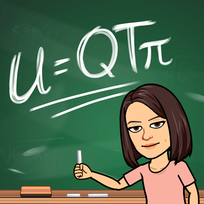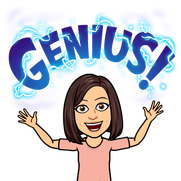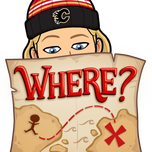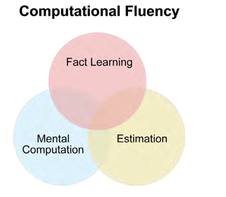Language Arts Links
Read-
parent_pipeline_~_check_for_understanding
parent_pipeline_-_use_prior_knowledge_to_connect_with_text
Light and Shadows
Watch the demonstration of how light is refracted with a convex, concave and rectangular pieces of glass.
HOW EYES WORK...READ MORE ABOUT EYES HEREWaste in Our World
https://edmonton.recycle.game/?fbclid=IwAR1z62ag-FoYR2oVsKj7TXcuC0-nJjcZqKnEdBiDM0VwRy2zi0Cg5SL5ARY What goes where?
http://www.kidsciencechallenge.com/year-four/zw_game.php Zero waste games https://your.caerphilly.gov.uk/kidsgogreen/fun-zone/rubbish-challenge Reduce/reuse/recycle sort https://www3.epa.gov/recyclecity/dumptown/index.htm http://www.recycleroom.org/GameServer.aspx?gameId=6&swf=Uploads/1458694164ShowWhatYouKnow-4-12-2013.swf Trivia
https://www.lifeofacan.com/
http://mocomi.com/biodegradable-and-non-biodegradable/ Biovs non biodegradable https://www.turtlediary.com/game/recycling-waste.htmlSorting
SIMPLE MACHINES
Resources and activities
|
Math Links

Teaching Mental Computation Strategies
The development of mental math skills in the classroom should go beyond drill and practice by providing exercises that are meaningful in a mathematical sense. All of the strategies presented in this guide emphasize learning based on an understanding of the underlying logic of mathematics. 1. Represent and describe whole numbers to 10 000, pictorially and symbolically.
Study Jams - Order Whole Numbers- includes a teaching video, key vocabulary, and also has a “test yourself” section
BASIC FACTS (addition, subtraction, multiplication, division)
Interactive Addition (Gamequarium)
Leon's Math Dojo (click Maybe later)
Hoops! All word problems use whole numbers only but the problems range from single step addition to multistep equations.
Dare To Compare!
Algebraic Reasoning - Find the value of a given object based on information provided by two scales.
PROBLEM SOLVING - Leon Math Problems
That's A Fact (Become a math whiz!)
Power Lines 1 - Mathematical reasoning level 1
Power Lines 2 - Mathematical reasoning level 2
Power Lines 3 - Mathematical reasoning level 3
Sudoku Online (choose from various levels)
Number Puzzle - Use mental math skills to solve a pyramid number puzzle.
Sudoku Online (choose from various levels)
Interactive Algebra Quiz-Distributive PropertyDistributive Property Worksheets
Meteor Multiplication Arcademic Skill Builders
Multiplication Grand Prix Multi-player
Exploring Fractions of a Set with Number Frames
Make a Match (Match equivalent proper fractions)
Fraction Game This NCTM Illuminations page is an interactive tool involving a flash card type fraction game. .
Fishy Fractions Comparing Fractions (click Maybe later to go directly to the activity)
Identify Fractions with Lines instruction and practice in identifying the numerator and denominator.
|
|
practice_booklet_for_multiplication_and_division.docx
Download File
practice_booklet_for_number_sense_1.docx
Download File
extra_practice_booklet_-_patterns_and_equations
Download File
extra_practice-_stats__probability
Download File
Math is divided into Major Units of study
Patterns and Equations This unit will be the first we study in grade 5. During this unit, you will become able to demonstrate: pattern rules, how each element in a pattern differs from the previous one, why a number is or is not the next element, predict the next term, use a variable to describe a pattern, and use a variable to write an equation.
Multiplying and Dividing Whole Numbers In grade 4 you were introduced to multiplication and division, and in grade 5 we will keep building on these basic skills by learning how to: multiply 2 digits by 2 digit number and solve long division equations with 1 digit divisors and 3 digit dividends.
Whole Numbers Whole numbers are the second unit we will work with this year. By the end of this unit, you will be able to demonstrate: the meaning of each number in a given numeral, estimation strategies, and compatible numbers.
Measurement In the measurement unit, much like the other units, skills from grade 4 and earlier will be built upon. This unit will prepare you with the skills to demonstrate relationships among perimeter, shape, and area, estimate volume and capacity, and know-how to work with various units of length.
Fractions and Decimals Fractions and decimals are another unit that builds off what was learned in grade 4. In grade 5 we will go through describing and understanding: sets of equivalent fractions, comparison of fractions with like and unlike denominators, decimals to the tenths, hundredths, and thousandths, relationships between fractions and decimals, comparing and ordering decimals, predicting sums and differences of decimals.
Geometry, Geometry involves two different levels of understanding; the first is conceptual understanding and the second is procedural understanding. For Conceptual understanding, we will be going over how to explain and estimate: edges, faces, sides, and line segments that are parallel, intersecting, vertical and horizontal. We also will learn about the attributes of quadrilaterals.
Next, for procedural understanding, students will demonstrate their ability to: identify and draw parallel, intersecting, perpendicular, vertical, horizontal edges, faces, sides, and line segments. Also, it is important to be able to identify and sort rectangles, squares, trapezoids, parallelograms, and rhombuses.
Statistics and Probability Statistics and probability involve the following outcomes: understanding by explaining and demonstrating the difference between first-hand and second-hand data, drawing conclusions that can be made from a bar graph, figuring out the likelihood of a given outcome, and determining the relative likelihood of two outcomes. We will also spend a lot of time on accurately interpreting bar graphs as well as constructing double bar graphs including labels and legends. Extended thinking is also required in this unit whereby students will be asked to design and conduct probability experiments to demonstrate and investigate the likelihood of outcomes.





